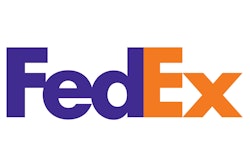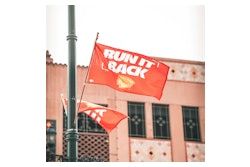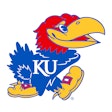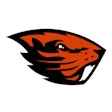As the literature on the bulletin board went unnoticed, Chris Butler could see the writing on the wall.
Beginning with his arrival in the Georgia Southern University Campus Recreation & Intramurals department in 2008, Butler observed students walking through campus with their cell phones front and center and their ear buds plugged in. Now the department's assistant director of marketing and communications, Butler knew then the days of reaching students solely with printed fliers, posters and brochures were numbered.
"I would sit in our student center and watch students walk by bulletin boards and not even glance at them," he says. "It was not something that was going to get their attention. They were in different worlds."
So, too, are campus-marketing professionals these days.
A dozen years ago, AB published an article about campus recreation marketing, and nowhere in those 2,800 words did the phrase "social media" appear. In 2002, it was all fliers, posters and brochures — and facility banners and sidewalk signage and student newspaper ads. Facebook, Twitter, Instagram and the like did not yet exist.
Since then, social media platforms have proliferated at such a pace that — even though his department actively uses only a handful of them currently — Butler has "name-squatted" on close to 20. "We're monitoring some of these emerging networks like Pheed and Tumblr just to see what's going to happen with them, what our next big wave will be," he says. "We register the GSU Campus Rec brand everywhere we go, and if we ever need it one day, we'll certainly have it."
TWO-WAY EXCHANGE
Few rec professionals have as solid a grasp of what's happening in social media as Butler, who has spoken on the topic repeatedly to National Intramural-Recreational Sports Association audiences since 2010. His presentation that year was titled "Putting the Social in Social Media: Utilizing Social Media to Reach Target Audiences." He admits to learning much in the short time since then, but the underlying theme — engagement — remains true today. "We want to seem human," Butler says of GSU's 30-member CRI staff. "We don't want to sound like this huge department. Our Twitter account feels like an account that everyone can relate to. If someone writes a message to us, it won't go unanswered."
Butler's staff strives to keep overt marketing of CRI offerings to a minimum on its social media outlets of choice — Facebook, Twitter, Instagram, Google+ and YouTube. "We make sure that our social is not all advertisements," Butler says. "We certainly don't want it to be known as something that's not really valuable to our students, where it's just a PR tool."
A two-to-one ratio of "interesting messages" to marketing messages is the goal, according to Butler. On Feb. 14, for example, a department tweet — "No Valentine this year? Don't worry, those candy 'conversation hearts' have a shelf life of five years" — offered a friendly reminder to maintain healthy peace of mind while avoiding unhealthy preservative-laden candy.
Campus rec marketers agree that social media is most effective as a two-way exchange. Programs such as TweetDeck allow departments to track when they or their programs and facilities are mentioned in student postings. "The only way for social media to work is if you're responding to people all the time," says Kristen Pengelly, assistant director of marketing for DePaul University Campus Recreation, which calls the Ray Meyer Fitness and Recreation Center home. "Someone's like, 'I'm so sore after a great workout at the Ray,' and I might ask, 'Oh, what did you do? Did you take a class?' And the next thing you know we have a follower, and we've got someone who's excited."
"We find that our Twitter account has been more valuable than we had ever imagined it to be," says Diane Dahlmann, who in 16 years as recreation director at the University of Missouri has built the MizzouRec brand primarily through printed materials, including MizzouRec NATION, a magazine published three times annually. What the magazine doesn't allow for is instant feedback.
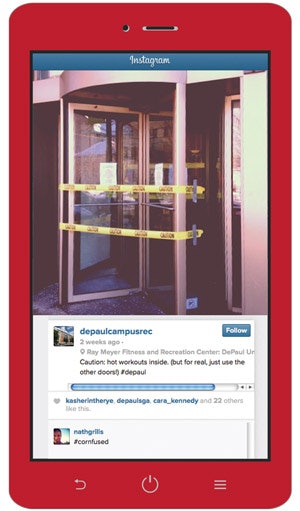 SMART TALK DePaul Rec’s clever spin on an inoperable revolving door resonated with Instagram followers.
SMART TALK DePaul Rec’s clever spin on an inoperable revolving door resonated with Instagram followers.
BE SILLY, SASSY
As MizzouRec facilities were shut down two full weeks over the 2013-14 holiday break for a refresh — including the refinishing of every square foot of wood flooring — MizzouRec's 2,750 Twitter followers at the time were regularly updated. "The staff was so excited about the changes, and that enthusiasm was translated into the way we were giving hints about what we were up to and using little shadow shots to say, 'Here's a peek at what we're working on for you,' " Dahlmann says. "And so the dialog back and forth via our Twitter account was really charming — 'I miss my rec. It's the one thing I miss. Break is so long.' We've never had that before, and so to invoke those kinds of emotional responses that help people feel connected to spaces and to functions, I find that to be a little bit of a miracle. We're thrilled with that."
Seizing upon a photo op during Chicago's brutally cold winter, when revolving doors at the Ray Meyer Center were inoperable and cordoned off with caution tape, Pengelly posted a photo on Instagram with the caption "Caution: Hot workouts inside."
"It got 25 likes in no time," she says. "Sometimes when you're silly or speaking in a tone that's not necessarily businesslike but more conversational, that's what they really click on and like."
How silly depends on the institution and what makes sense for its particular brand. An Ivy League school, for example, may choose not to duplicate the frequent stop-animation videos that bring towel animals to life on Georgia Southern's Instagram feed. "We do a lot of funny towel art here in our gym," Butler says. "I know that sounds absolutely ridiculous, but we're not the history department. It's a rec center at the end of the day. We want people to know that we're a fun place. We don't do a lot of pushing to get people involved. We hope people just want to be connected with us."
Dahlmann describes her department's social media voice as "sassy," something that wouldn't translate in print even if attempted. "I think that social media lends itself beautifully to developing personality and style," she says, adding that Twitter followers have been known to flirt with the otherwise anonymous (and androgynous) MizzouRec account. "The beauty of Twitter and employing a sassy personality is that Twitter is about quick responses that have immediate relevance. I think that can come off wrong in print, and print sticks around. Twitter is more of a quick conversation between people who seemingly know each other."
TIMING IS EVERYTHING
So quick is Twitter, in particular, that messages can get easily buried in the stream. Georgia Southern times its tweets to coincide with class breaks — when students among the 4,500 followers (as of this writing) of @GSUCampusRec are most likely to be checking their smartphones. "It's almost like playing the odds," Butler says. "There are no guarantees to it, but we try to time our posts or take advantage of a pop culture moment. We will tag onto anything that's happening that we think is all of a sudden going to become a trending topic. That's a great way for us to reach into our students' world, as well."
For off hours, there's HootSuite, a popular social media dashboard that allows for preprogramming tweets and other posts so that no one is manually sending them to coincide with study breaks at, say, 10:30 p.m. It's also a handy way to schedule repeat reminders — pertaining to a team registration deadline, for example — so they appear at predetermined dates and times. Conventional wisdom dictates nine tweets before a single message is seen by most followers. "You can sort of adapt the message a little bit, so maybe write three different tweets in a word document and then copy-paste them," Pengelly says. "They can go out at different times of the day, and that way maybe followers aren't seeing the exact same thing, but they are seeing something very similar that's promoting the same thing."
At Georgia Southern, Twitter has overtaken Facebook as the CRI's go-to marketing tool within the past 18 months, eclipsed only by the GSU main website as a driver of traffic to the CRI site (Facebook ranks fifth or sixth in this capacity, according to Butler). And while he monitors many social media options, Butler is wary of spreading the CRI brand too thin. "I always tell my students and the staff here that we want to be amazing where we are and not just be average everywhere, so we have to focus our energy," he says, adding that you also don't want to become predictable. "You don't give any incentive for people to follow you in multiple places if you post the exact same thing at the exact same time on all five networks. That's not interesting. That's not social. We certainly don't want to do that."
This month, Georgia Southern will begin testing an app developed in-house and designed to allow users to customize the information they get from CRI — from the availability of treadmills at any given moment to intramural schedules, standings and statistics. But Butler's department remains committed to the give-and-take afforded through social media.
"You have to be social," he says. "Nobody likes people who show up at a dinner party and just talk about themselves. You have to go out, you have to interact, you have to build up that trust."
Commitment is the key word. "I hear it all the time — people say, 'We have a Twitter account, because it's a free way of advertising,' " Butler adds. "Social media is free like a free puppy. You're going to pay for it in the end — if you're doing it right. That's something people have to realize. It takes some time. It takes some effort. It takes some strategy to really do well."
Social Graces
10 Tips toward a more effective online voice.
1. Watch the length of your tweets. Using only 100 of your available 140 characters gives users room to retweet your message.
2. Use full words and avoid texting speak. Strive for a consistent online voice that fits your brand.
3. NO MATTER HOW GREAT YOUR PROGRAM IS, PEOPLE DO NOT WANT TO READ ABOUT IT IN ALL CAPS. Calm down.
4. Schedule posts, but not all posts. Relevance and timeliness trumps the schedule.
5. Limit your posts to one or two per day on Facebook, three to six on Twitter.
6. Limit yourself to one, maybe two, hashtags. It #annoys #people if you #hashtag random #words. Focus hashtag use on communities, such as your institution's initials or well-known campus phrases.
7. Search those same keywords to discover conversations about you and your institution, then engage that audience and listen to it. You'll learn a lot and be better at marketing for it.
8. No more than half of all posts should be marketing posts. Add value to your followers' feeds by being interesting, witty and fun.
9. Respond to questions in a timely manner — 24 hours or less.
10. Be prepared to handle negative comments, but don't immediately remove them. Respond calmly and ask for suggestions. You likely won't get any, but you showed that you valued the opinion.

Network Primetime
A search of Apple's App Store turns up 2,200 results for "social networking" apps. Clearly, you can't be on them all. Here's a primer of the most popular.

Facebook
What it is: The world's largest social network, with more than 1.2 billion active users.
Why you should use it: Share photos, videos and updates on the social network most widely used among 18- to 24-year-olds.
What to keep in mind: Facebook is constantly tweaking its algorithm that determines what appears in a user's feed. Engaging content such as photos and videos will be seen by more people than a boring status update.
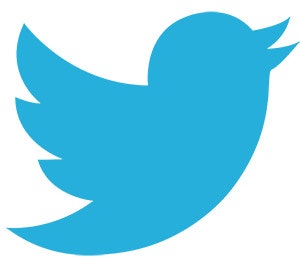
Twitter
What it is: A microblogging service that allows users to update their followers 140 characters at a time.
Why you should use it: It's quick and easy. And with nearly 650 million users, chances are more than a few of them are your students.
What to keep in mind: #Please don't #overdo it #with the #hashtags.
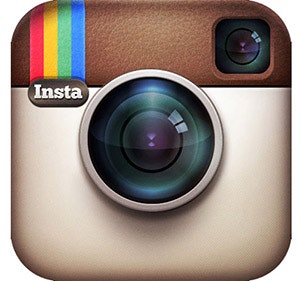
Instagram
What it is: A photo- and video-sharing network that is currently the world's fastest-growing social network.
Why you should use it: It's a visual medium, and your facility has great visuals to show off. Share them on a network to which your students are likely already addicted.
What to keep in mind: Don't bombard your followers with posts. One or two a day, several hours apart will suffice.
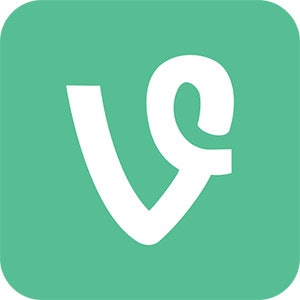
Vine
What it is: A mobile app that allows users to post short, looping videos
Why you should use it: It can be a fun, creative way to add video content to your social media portfolio, with nothing more than a smartphone.
What to keep in mind: With the swipe of a finger you can push your Vines to your Twitter and Facebook accounts, boosting exposure.

YouTube
What it is: Video-hosting site that doubles as the world's second-most-popular search engine.
Why you should use it: No medium is able to highlight your facility quite like video. Post tours of your facility, give demos on how to use equipment or create buzz for new programs.
What to keep in mind: You don't have to be a Hollywood producer to post videos on YouTube, but any good video requires a basic camera and editing software.
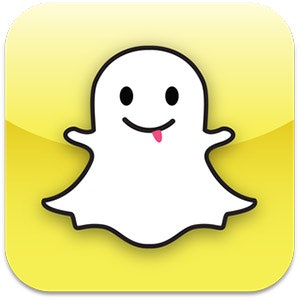
Snapchat:
What it is: Photo- and video-messaging app that allows the sender to choose how long the recipient can view the message (1-10 seconds) before it expires.
Why you should use it: The app's primary demographic is 13- to 23-year-olds, and it is relatively untainted by marketers. Set up a profile and your "friends" are opting in to receive your message.
What to keep in mind: While the "selfie" is often the photo of choice on Snapchat, we'd recommend highlighting your facility's offerings instead.

Google+
What it is: Google's version of Facebook.
Why you should use it: You're probably already using a Google product or two, so adding G+ to the mix should be seamless. Plus, Google Hangouts provide a unique video conferencing feature.
What to keep in mind: While Google+ claims it has more than 500 million users, it's not as widely used among college students as other social networks on this list.
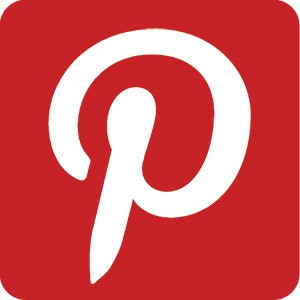
Pinterest
What it is: A visual bookmarking site that allows users to share content in the form of a "pin."
Why you should use it: Many gyms use Pinterest to upload graphics with motivational sayings to inspire members. Your rec center could easily do something similar.
What to keep in mind: Pinterest requires visuals. If you're sharing content from your own site, it will need a photo to accompany it.
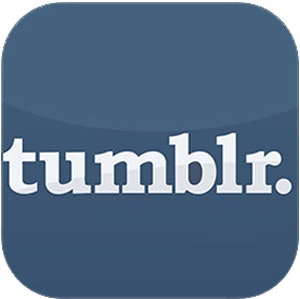
Tumblr
What it is: A Yahoo!-owned blogging site known for its emphasis on multimedia content.
Why you should use it: Tumblr allows users to simply add text, photos, videos, GIFs and music to their posts.
What to keep in mind: 109.3 million posts are made on Tumblr every day. You'll want to do something out of the ordinary to stand out.
— Michael Gaio
This article originally appeared in the April 2014 issue of Athletic Business under the headline, "Interactivity."















